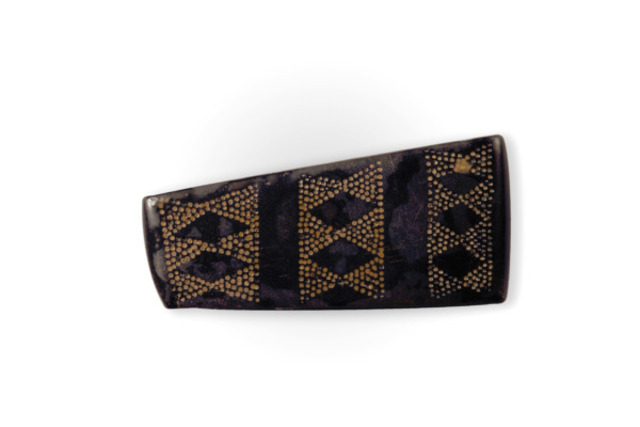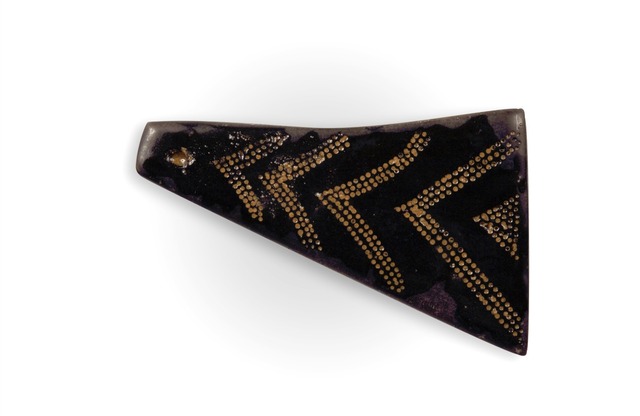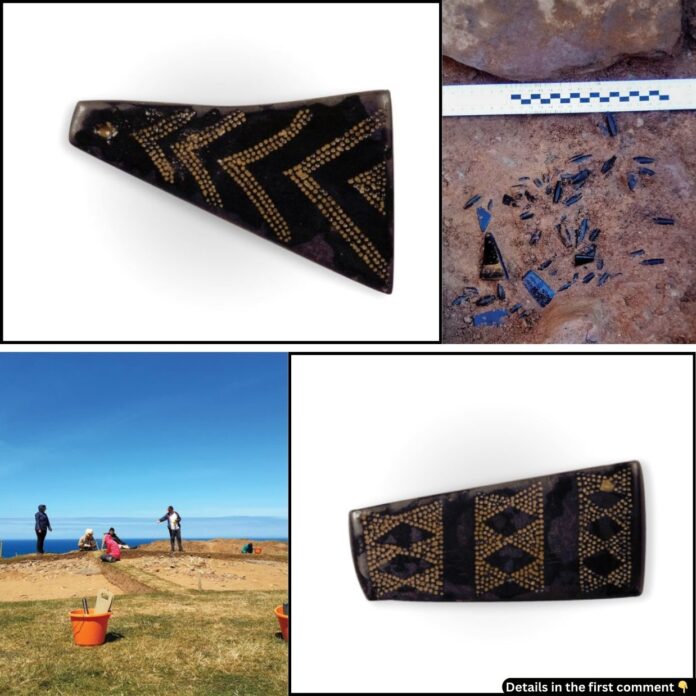Hidden beneath the rolling fields of Berk Farm on the Isle of Man lies a 4,000-year-old story waiting to be told. This ancient burial mound has yielded remarkable discoveries, including an intricate jet necklace, offering a rare glimpse into the lives, rituals, and connections of Bronze Age communities. As part of the Round Mounds of the Isle of Man project, this excavation is unlocking secrets that bridge the past and present, revealing how trade, craftsmanship, and tradition shaped a long-lost world.
The Discovery of a 4,000-Year-Old Necklace
The highlight of the excavation at Berk Farm is the unearthing of an intricate jet necklace. Comprising 122 beads, this extraordinary piece of jewelry was found in a stone-lined grave. The skeletal remains suggest the individual was buried in a crouched position, wearing the necklace at the time of interment. The material, jet—a black gemstone formed from fossilized wood—was traced back to Whitby in Yorkshire, indicating extensive trade networks during the Early Bronze Age.
![Over the past three seasons, archaeologists have been uncovering secrets of a Bronze Age burial mound at Berk Farm as part of the Round Mounds of the Isle of Man project. [Image credit: Manx National Heritage]](https://mysterious.vncash24h.com/wp-content/uploads/2025/01/OVER-T1.jpg)

Exploring the Burial Practices of Bronze Age Isle of Man
The burial mound at Berk Farm reveals much about the evolving funerary customs of Bronze Age societies. The mound itself underwent several phases of construction, starting with a central grave covered by layers of barrows and cairns. This indicates the site’s prolonged use, perhaps as a significant ceremonial location.
Additional finds, including pottery vessels, flint tools, and cremated human remains, point to a variety of burial practices. These artifacts not only reflect the technological skills of the time but also highlight the importance of rituals in marking death and honoring the deceased. The Isle of Man’s burial traditions also bear similarities to those of surrounding regions, suggesting a shared cultural framework within the British Isles.
Video
Watch as 4,000-year-old jewelry is discovered on the Isle of Man – uncover the fascinating history and significance of this ancient find!
Long-Distance Connections in the Early Bronze Age
![Among the remarkable finds during the excavation was a jet necklace, believed to have originated from Whitby in Yorkshire. [Image credit: Manx National Heritage]](https://mysterious.vncash24h.com/wp-content/uploads/2025/01/Among-the-remarkable-finds-during-the-excavation-was-a-jet-necklace-believed-to-have-originated-from-Whitby-in-Yorkshire-Image-credit-Manx-National-Heritage.jpg)
These exchanges were not limited to materials. They likely included the transfer of ideas, technologies, and cultural practices, shaping the social dynamics of the time. The intricate craftsmanship of the necklace also reflects specialized skills, indicating the presence of artisans whose work was highly valued across regions.
Scientific Techniques Enhancing the Excavation
Modern technology has played a crucial role in uncovering the secrets of Berk Farm. Archaeologists have employed a combination of aerial photography, LiDAR data, and field surveys to map and analyze the site. These methods provide detailed insights into the mound’s construction and its surrounding landscape.
In addition to traditional excavation techniques, scientific analysis of artifacts and skeletal remains has enriched our understanding of Bronze Age life. For instance, isotopic studies may reveal information about the diet and migration patterns of the individuals buried at the site. Collaborative efforts with Manx National Heritage and academic institutions have ensured that these discoveries are documented and preserved for future research.
Significance of the Undisturbed Burial Site

The undisturbed nature of the grave at Berk Farm is a rare and valuable find. The intact condition of the skeletal remains and associated artifacts allows researchers to piece together a more complete picture of burial practices and societal structure during the Bronze Age.
As Dr. Emily Banfield from the University of Leicester noted, the preservation of the burial site is critical for understanding how Bronze Age people on the Isle of Man treated their dead. It offers a unique opportunity to study the rituals, beliefs, and social hierarchies of a community that lived over 4,000 years ago.
Community Engagement and Education
The Round Mounds of the Isle of Man project has not only advanced archaeological knowledge but also fostered community involvement. Local residents and schools have been invited to participate in site visits, workshops, and excavation training, bringing history to life for the public.
These initiatives highlight the importance of public archaeology in preserving cultural heritage. By engaging the community, the project ensures that the stories of the Isle of Man’s ancient past are shared and appreciated by future generations.
Conclusion: Decoding the Past at Berk Farm
The excavation at Berk Farm is a testament to the enduring mysteries of the Bronze Age. From the discovery of the jet necklace to the insights gained from the burial mound, the site offers a fascinating glimpse into a world shaped by trade, tradition, and ritual.
As the Round Mounds of the Isle of Man project continues, researchers hope to uncover even more about the lives and legacies of Bronze Age communities. These findings not only enrich our understanding of the past but also remind us of the interconnectedness of human history, inspiring curiosity and wonder in the present day.
